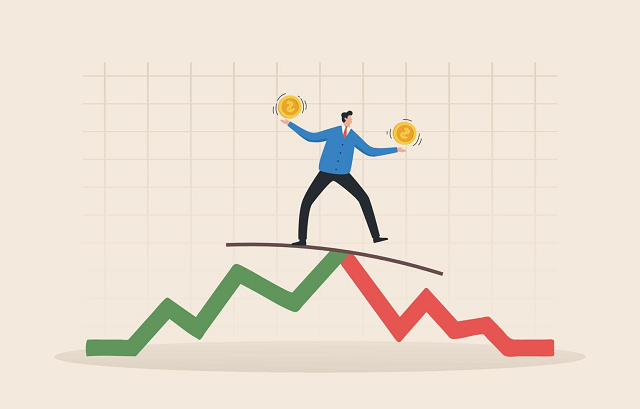Entering the stock market in early 2018, I was unaware that the market’s two-year bull run was nearing its end. Just over four months after I opened my brokerage account, the VN-Index peaked at 1,198 points (10/04/2018), wiping out all my previous gains.
At that time, my (buy) decisions were heavily influenced by stockbrokers. After making some initial gains, I became overly confident in my limited knowledge, traded on my own, and quickly became overwhelmed when the market plummeted, leaving me unsure of how to handle my now “trapped” stock investments.
 Illustrative photo
|
My friends joked that “you haven’t lost until you sell” or “to reduce your losses, deposit more money.” I eventually swallowed my pride and “cut my losses” by nearly 25% in July 2018, vowing to stay away from the market and invest the remaining funds in education to enhance my knowledge.
I was secretly relieved to have stayed out of the market during the period when the VN-Index fell to 650 points due to the global COVID-19 pandemic, which also marked the beginning of an era of ultra-low interest rates, followed by widespread inflation that central banks around the world are still struggling to contain.
Emotional investing often prevails over rational decision-making, and I re-entered the market in late 2020 – when it had already rallied significantly. As the lyrics of a popular song by musician Khac Hung go, “Tomorrow will be different, once again the trees will be lush and green…”, I longed to see my portfolio as verdant as those trees. This time, things were indeed different.
I invested heavily in a single stock in the information technology sector, an action known in industry jargon as “all-in.” I (along with many other investors) reaped substantial gains, even averaging up my cost basis multiple times. Later, through an “alo model,” I made an additional 30% profit by investing in a real estate stock in an industrial zone.
However, my perplexity persisted, merely shifting from year to year or from one form to another. I only realized when the market began to enter another downtrend phase, with the VN-Index confirming a decline, and I hastily closed my position around the end of September 2022. I made a profit, although I regretted not closing it sooner. I continued to invest the proceeds in education.
It was not until March 2023 that I ventured back into the market.
This third time around, I determined to clearly define my investment style as either defensive or aggressive, and to allocate assets to my stock portfolio accordingly, at approximately 20%.

Illustrative photo
|
Drawing from my past experiences, I recognized that I am not an aggressive investor, nor am I drawn to highly speculative, momentum-driven stocks. Despite 2023 being a year of significant growth for stock prices, my portfolio lacked growth stocks. It primarily comprised stocks from industries with compelling narratives and industry leadership positions, operating within a relatively favorable domestic and global macroeconomic environment. This was crucial, as 2021 was a year when I did not pay much attention to analysis and simply “bought with my eyes closed” and still made a profit due to the widespread bullish consensus across most industry groups.
Furthermore, I rarely trade stocks quickly, preferring to hold them for what I consider to be a sufficiently long period. When my target profit or risk threshold is reached, I adhere to a disciplined approach of taking profits or cutting losses.
Avoiding leverage (margin borrowing) is also a way I manage risk within my investment style. Even during periods of strong market performance, when individual investors tend to exhibit FOMO (fear of missing out), I maintain a neutral stance as much as possible. This reduces my anxiety during market downturns, such as the one that occurred in August 2023, when the VN-Index dropped over 55 points.
Legendary investor Jesse Livermore famously said, “It is easier to follow a few stocks than many.”
My portfolio never exceeds 4 stocks and always maintains a certain cash balance – even though this incurs an opportunity cost. Within it, there is always one stock with the largest weighting, another stock from the same industry but with a smaller weighting; and there will be 1-2 other stocks with smaller weightings, depending on the circumstances. These stocks typically belong to different industries to provide diversification and protect the overall portfolio during periods when I perceive higher risk in my core stock holdings.
In addition, if I am uncertain about which industries or stocks to choose, I rely on analysis and recommendations from reputable professional institutions with a proven track record.
By applying these lessons, I have generated a modest profit, which is preferable to keeping my money in a savings account. Of course, everything requires time to prove its worth, and drawing a straight line requires at least two points.
Always remember that the amount of profit is not as important as the percentage of that profit that is realized.







































